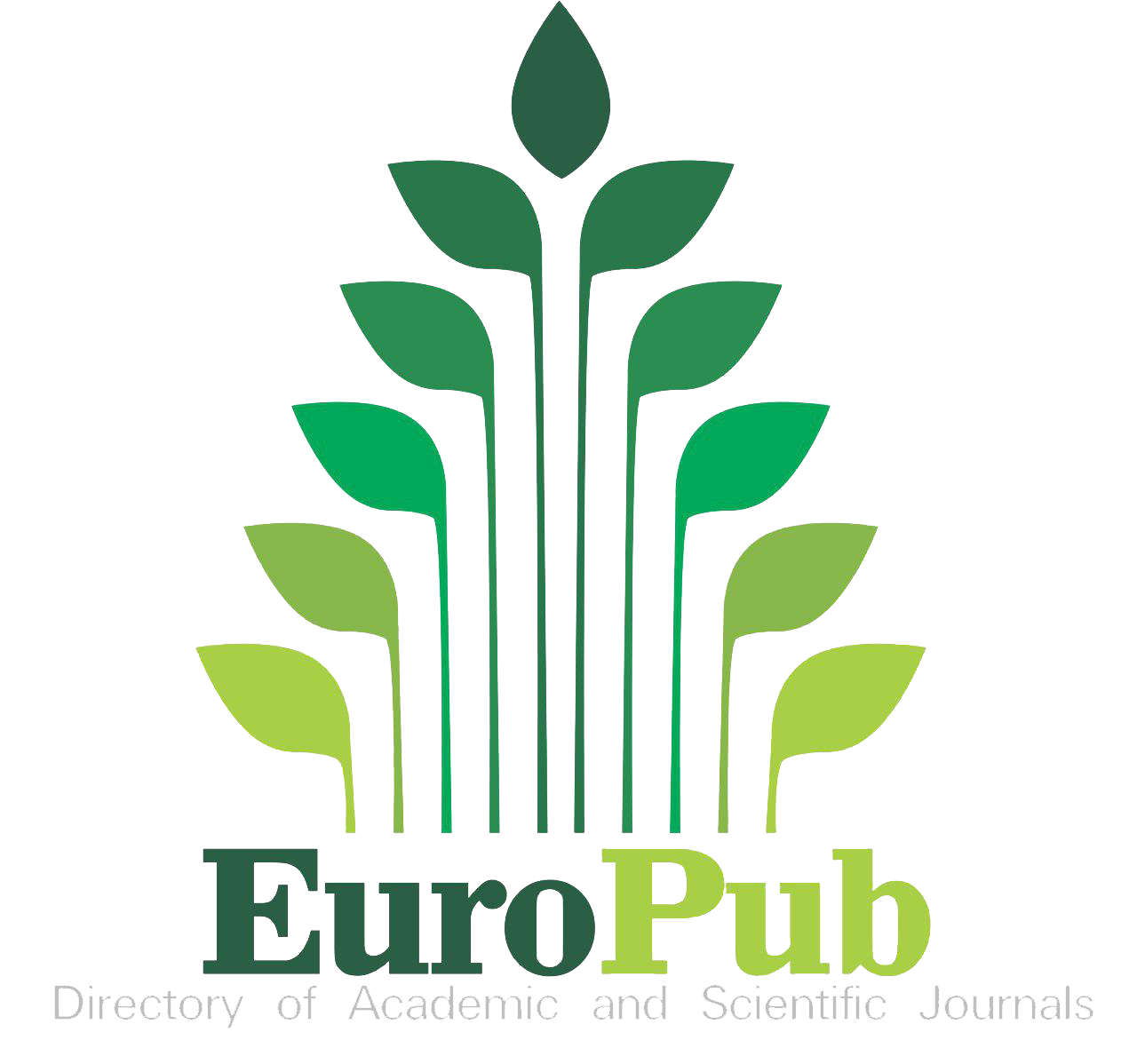Phytochemical and Biological Screening of Catholic Vegetable (Jatropha Tanjorensis) Aqueous Extract in Bali, Taraba State, Nigeria
DOI:
https://doi.org/10.54536/ajcp.v2i2.1602Keywords:
Biological screening, Catholic Vegetable, Phytochemical, Aqueous ExtractAbstract
Jatropha tanjorensis has been used as a medicinal herb in treatment and management of disease because they are relatively safer, more affordable and sometimes offers better therapeutic value than synthetic drugs. The study investigated the phytochemical and biological screening of catholic vegetable (Jatropha tanjorensis) aqueous extract with the objectives of evaluating some secondary metabolites in the plant using standard qualitative methods and ascertaining the antimicrobial effect of Jatropha tanjorensis aqueous leave extract on bacteria of medical importance such as Pseudomonas aeruginosa, Klebsiella pneumonia, Staphylococcus aureus, Salmonella typhi and Escherichia coli using the agar well diffusion method. The results revealed that the extract of the leaf of J. tanjorensis contain some important bioactive components (phytochemicals) in a high amount such as saponins followed by flavonoids, alkaloid and tannins in moderate amount whereas phenol, phlobatannins and glycosides are in low amount. It also shows that the extract was active against E. coli, P. aeruginosa, S. aureus, K. pneumonia and S. typhi measuring clear zones of inhibition 30.0mm, 22.0mm, 19.0mm, 18.0mm and 17.0mm respectively. Thus, the exhibition of strong antibacterial activity and phytochemical profiles obtained from the analyses of J. tanjorensis leaf indicated that it might be recommended for human consumption and adequate amount of consumption could contribute greatly towards meeting human nutritional needs for normal body growth and adequate protection and curative measures to common diseases related to the test organisms.
Downloads
References
Afiukwa, A. C. & Igwe, O. D. (2015). Nutritional and phytochemical evaluation of the aerial and underground tubers of air potato. British Journal of Applied Science and Technology, 2231- 2248.
Akhilesh, K. & Tewari S. K. (2015). Origin, distribution, ethnobotany and pharmacology of Jatropha curcas. Research Journal of Medicinal Plants, 9, 48-59.
Awe, I. S. & Sodipo, O. A. (2001).Studies on the chemical composition and physio-chemical properties of seeds of some wild plants. Nigerian Journal of Food Science and Nutrition., 3, 103-107.
Bello, B.C., Izergina, N., Cavssinus, E. & Reicjert, H. (2008). Amplification of neutral stem cell. Proliferative By Intermediate Progenitor Cells in Drosophila Brain Development. Neural Dev., 19(3), 5.
Carlasabandar K. (2010). Secondary metabolite compounds from Jatropha species. www.wordpress.com
GBIF Secretariat (2021). GBIF Backbone Taxonomy- Jatropha tanjorensis. Checklist dataset. https://doi.org/10.15468/39omei accessed via GBIF.org on 2022-08-24.
Gernah, D. I., Atolagbe, M. O. & Echegwo, C. C. (2007). Nutritional composition of the African locust bean. Biger Food J., 25(1), 190-196.
Igbinaduwa, P. O., Usifoh, C. O. & Ugwu, C. C. (2011). Phytochemical analysis and toxicological evaluation of the methanolic extract of Jatropha tanjorensis leaf. Journal of Pharmacy and Bioresources, 8(2), 86-91
Iwalewa, E. O., Adewumi, C. O., Omisore, N. O., Adebanji, O. A., & Azike, C. K. (2005). Proantioxidant effects and cytoprotective potentials of nine edible vegetables in Southwest, Nigeria, Journal of Medical Food, 8, 539-544. https://doi.org/10.1089/jmf.2005.8.539
Morton, J. (2001). Purple mombin fruits of warm climates. Miami Publishers: New York, 245
National Population Census (2006). National Population Commission Office Magami road, Jalingo, Taraba State.
Nwachukwu, C. N. (2018). Nutrient, phytochemical and anti- nutrient evaluation of Jatropha tanjorensis leaf (Hospital too far). Journal of Agriculture and Food Sciences., 16(2), 36-46
Ochulor, O. C., Njoku,. U., Uroko, R. I. & Egba, S. I. (2018). Nutritional composition of Jatropha tanjorensis leaves and effects of its aqueous extract on carbon tetrachloride induced oxidative stress in male Wistar albino rats. Biomedical Research, 29(19).
Okwu, D.E. & Ndu, C.U. (2006). Evaluation of the phytonutrients mineral and vitamin contents of some varieties of yam (Dioscorea spp.). International Journal of Molecular Medicine and Advance Science, 2, 199-203.
Olakunle, T.P., Akinro, E.B., Agolade, J.O., Yoyinoye, A.S., Ghazal, M.A. & Oladeji, S.S. (2013). Inhibitory effect of pure honey on microorganisms isolated from wound, Journal of Environmental Science, Toxicology and Food Technology, 3(3), 80-84.
Onimawo, I. A. & Akubor, P. l. (2012). Food chemistry (Integrated Approach with biochemical background). 2nd Edition, Joytal Printing Press, Agbowo, Ibadan Nigeria.
Osho, A. O. & Bello, O. O. (2010). Antimicrobial effect of honey produced by Apis mellifera on some common human pathogens, Aisan J. Exp. Biol. Sci.,1(4), 875-880.
Oyewole, I. O., Magaji, Z. J. & Awoyinka, O. A. (2007). Biochemical and toxicological studies of aqueous extract of Tithonia diversifolia leaves in wistar albino rats. Journal of Medicinal Plants Research, 1(2), 30-33.
Sodiop, O.A, Akiniyi, J.A. & Ogunbamosu, J.U. (2000). Studies on certain characteristics of extracts of bark of Pansinystallia macrucucerias. Global J. Pure Appl. Sci., 6, 83-87.
Topographic Sheet (1968). By Federal Surveyors Nigeria. Topographic Sheet, 255, edition 1, with scale of 1: 100,000.
Trease, G. E. & Evans, W. C. (2009). Pharmacognsy. 11th ed. Brailliar Tiridel Can. Macmillian publishers.
Ujonwundu, C. O., Okafor, O. E., Agha, N. C., Nwaogu, L. A., Igwe, K. O. & Igwe, C. U. (2010). Chemical composition of Combretum zenkeri leaves. Journal of Medicinal Plants Research, 4(10), 965-968.
United States Department of Agriculture, USDA (2007). Genus: Jatropha L., Germplasm Resources Information Network, United States Department of Agriculture, Retrieved 2015-08-13
USDA PLANTS (2007-2010). Jatropha tanjorensis. Updated for ITIS by the Flora of North America Expertise Network.
WHO (World Health Organization). (2002). The world health report 2002 – Reducing risks, promoting healthy life. Geneva, WHO.
Downloads
Published
How to Cite
Issue
Section
License
Copyright (c) 2023 O. Imohiosen

This work is licensed under a Creative Commons Attribution 4.0 International License.








